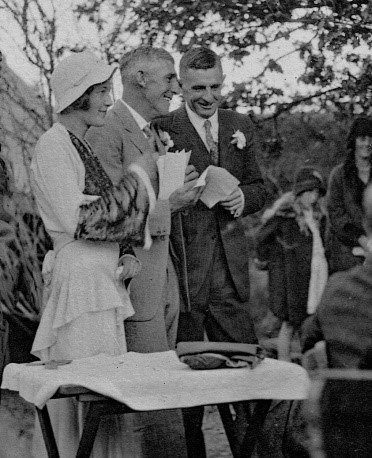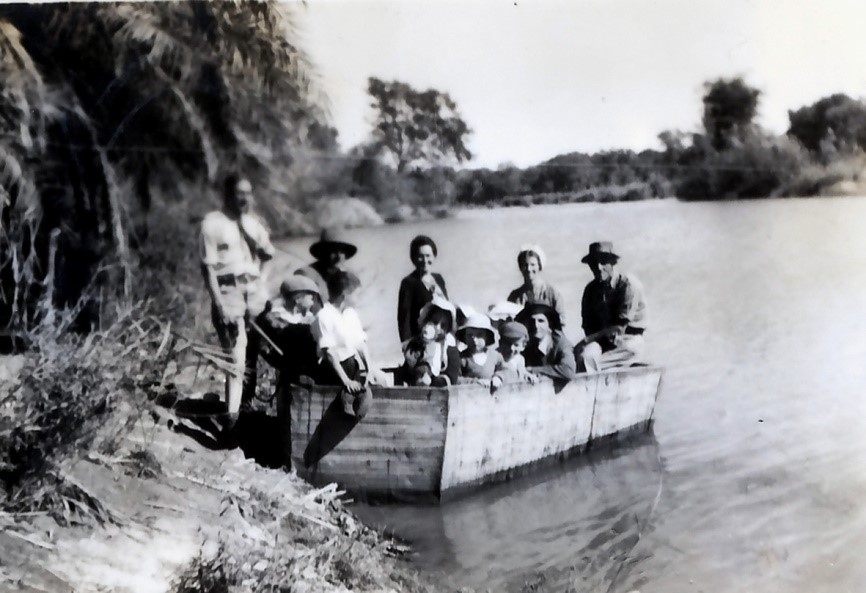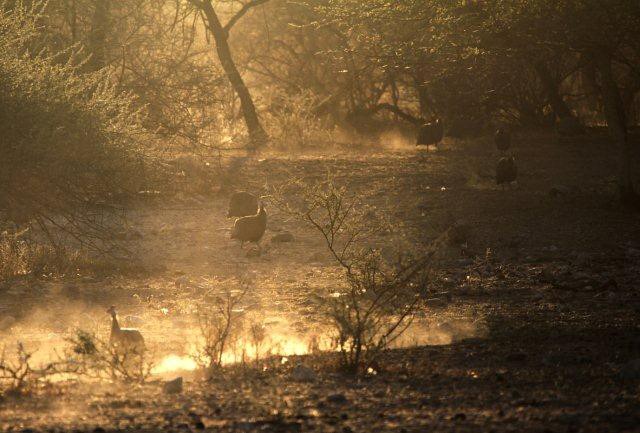Charles Clan-conal Dunsandle Daly is an enigma in many ways. He was born, we think, in 1893 in Potchefstroom, or Johannesburg. There is no record of baptism. At the time his father, Jean Daly, was dealing with insolvency and negotiating the move of the family from Potchefstroom to Nylstroom and this may have proved a distraction. We have no idea why Charles was given names that refer to the Baron Dunsandle and Clancolan, a title bestowed on the British Member of Parliament, James Daly from County Galway in 1845. The Baron’s Tory views would seem to be rather incompatible with the Afrikaner Daly family in Potchefstroom. (Perhaps that explains the misspelling of the name)
An intriguing reference in the National Archives when Charles’s estate was filed after his death in 1946 is that he was a “mental patient” with no documents.[1] This may simply be an error. He showed no such instability in later life and the very same estate documents show that he was a well-off farmer. On the other hand, an episode of mental problems in early life may explain his lack of documentation and it may also explain why he appears not to have enlisted, like his brother, Ramsay, for World War 1.
 Charles, like his brother Ramsay, suffered from gastric ulcers and his uncle, Dr Ramsay Daly, surgeon at the Johannesburg Hospital performed a stomach resection for Charles in about 1930. While Charles was in the hospital ward recovering, he was nursed by Marian Stocken, Charles and Marian were both tall but she was razor thin and he was stocky. They made a beautiful couple and married in 1932 at St Martin’s-in-the-Veld in Rosebank, Johannesburg. Charles’s brother, Ramsay, was best man.
Charles, like his brother Ramsay, suffered from gastric ulcers and his uncle, Dr Ramsay Daly, surgeon at the Johannesburg Hospital performed a stomach resection for Charles in about 1930. While Charles was in the hospital ward recovering, he was nursed by Marian Stocken, Charles and Marian were both tall but she was razor thin and he was stocky. They made a beautiful couple and married in 1932 at St Martin’s-in-the-Veld in Rosebank, Johannesburg. Charles’s brother, Ramsay, was best man.
Marian Stocken was a remarkable woman and it is worth looking at her background. She was born in Kensington, London, in 1908, christened at St George’s Church, Hanover Square. Her father was a coach maker and Marian would later tell stories of leaning over the railings of their house to see King Edward VII come to inspect his new carriage. When her parents’ marriage ran into difficulties, May Stocken emigrated to South Africa where her son had established himself, taking with her the daughters Marian and Helen (Nell). They were welcomed by the establishment in Cape Town but chose to settle in a beautiful thatched cottage in Rosebank, Johannesburg. Nell became a social worker and Marian became a nurse.
In 1927 Charles had bought the farm Rietfontein in the Waterberg but with Marian at his side they took on an even bigger challenge, crossing the Limpopo River to a large farm in the Tuli Block that they named Dunsandle. It was directly across the river from the farm bought by his brother Ramsay. Ramsay’s children fondly remember crossing the river on a boat pulled over the water on an overhead cable while the crocodiles watched with their eyes just above the waterline.
 In this picture, Charles is on the far right. Ramsay is next, facing the camera with Ramsay (Bill) and Jeanne. Louise is at the back of the boat next to Charles and she is holding baby Karine.
In this picture, Charles is on the far right. Ramsay is next, facing the camera with Ramsay (Bill) and Jeanne. Louise is at the back of the boat next to Charles and she is holding baby Karine.
The farm Dunsandle was a very long way from life in Kensington, London or even from Rosebank, Johannesburg. How then did Marian cope with this wild place? Part of the answer is that Charles was in his element, this was where he was at home and she threw herself into the role of his partner in life. She packed away her dresses, tied her hair into a tight bun and unpacked her jodhpurs to ride horses at his side. Her main regret was that Charles absolutely refused to have children, saying that the Daly family had too many disturbed members. She was never without a pet dog in the house and spent hours watching the wildlife around the farm.

As children we were astounded at the refinements that Marian introduced into our lives. In their roomy rather lovely house, she would set the table with a lace tablecloth, silver cutlery and Spode tableware. She served her own Neapolitan ice cream with its layers of chocolate, vanilla and strawberry colours. To make her ice cream, the first we had ever tasted, she had imported a refridgerator that ran on paraffin, again the first we had ever seen. She loved telling the story of the neighbour who was given a drink with ice in it. He was so taken with the ice that he wrapped it in his handkerchief to take it home to show his wife.
The years that tested everyone in the Bushveld were the war years when these distant farms were virtually isolated because of petrol shortages. Our Aunt Marian would arrive to visit us with gifts of underclothes that she had made by washing the bags in which cake and bread flour was sold until they were clean and soft. Then she would sew panties and petticoats, even bras, embroidered with swathes of flowers and leaves fashioned from French knots and bullion stitch.
Charles died in 1946 soon after the photograph above was taken. One night, stricken with indigestion he went to get his antacid powder which had just arrived in the mail. In the dark he took instead the DDT poison meant for the garden; it had arrived in the same mail run. He died in terrible pain. The nearest doctor was many miles away. It was a terrible shock for Marian and for the family. After the burial, Marian returned on her own to this large isolated farm. She realised that she would only sell the property once it was fully fenced so she hired a manager and set off with him, on horseback, supervising the work. It sold well.
When we moved with our mother Louise to Potgietersrust to get access to schools, Marian bought a house close by. She remained an important part of our lives.
[i] DALY, CHARLES CLAN-CONAL DUNSDALE.
Identifier: TAB MHG_0_5395/46_1
Type and Form of Archive: Correspondence File
Name of Creators: MHG
ESTATE FILED 1946 MENTAL PATIENT NO DOCUMENTS.
